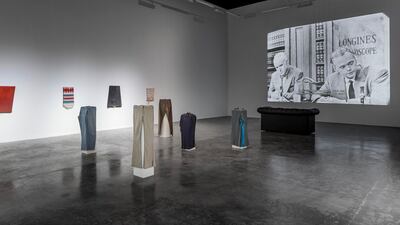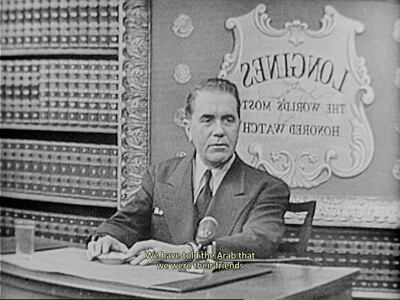“Nobody knows who he works for,” says Alessandro Balteo-Yazbeck. The Venezuelan-Lebanese artist uncovers the secret histories behind culture: showing how art – an apparently disinterested field of beauty and taste – obscures a spider’s web of money, geopolitical ambitions and personal interest.
In past projects, he has linked together the beloved mid-century designers Charles and Ray Eames, the Rockefeller Standard Oil fortune and the Tehran Museum of Contemporary Art (Cultural Diplomacy: An Art We Neglect, 2006–13), or Israel, Mark Rothko and the CIA policy of supporting abstract expressionism as a form of soft power (Israeli Nuclear Arsenal, 2004–14).
In his current exhibition, Balteo-Yazbeck turns to humanitarian crises, looking at how governments, NGOs, the media, and cultural critics instrumentalise catastrophes.
NGOs and aid groups, it could be suggested, earn their keep from the crises they are apparently trying to manage.
Instead of simply reporting information, the media gains viewership from their coverage of these human-interest stories. And the artist who makes an artwork about crises to prove his political credentials, or even the more quizzical artist who tries to untangle all this – well, forget it. He is as implicated in the charade as the rest. Nobody knows who he works for.
“The only excuse that I can give you,” Balteo-Yazbeck says about his decision to – despite all the above – make work on this subject, “is that I don’t think I’m actually doing a disservice to any particular cause, but to the gallery. I’m saying to you that most probably these works will circulate at a relatively low price if they sell at all”.
The Green Art Gallery in Dubai is currently showing Balteo-Yazbeck's Instrumentalized (2018), an installation made from the clothing that well-meaning people regularly donate to refugee crises: cast-off T-shirts, leggings and sweatshirts.
He has covered the plinths that typically hold sculptures in these flagging swathes of cotton as well as wall mounts, and has paintings placed at the height of those who might wear the items In the back of the space is Chronoscope 1952-53 (2017), the latest in a series of videos comprised of footage from the 1950s American news show of the same name. The programme, here re-edited, shows key figures from the US and international power establishment – analysts, authors, the British minister of state – speaking with a breathtaking lack of self-awareness about the primitive nature of Iranian farming or the trouble in the Middle East – and, of course, how America could "help" solve these problems.
“These programmes ran live, broadcast from New York City,” Balteo-Yazbeck explained during a talk at the gallery with the Dubai-based art critic Kevin Jones. They reached about “3,000 TV sets. This is maybe why they were able to talk like this and say such outrageous things for us today, because they were talking to an elite – an industrial and financial elite – and they were building consent. They were trying to explain the reasons and the motivation behind foreign policy that the US was implementing” – a means of nudging democratic opinion to where they wanted it to be.
At the gallery, this image of the media as a mouthpiece for the establishment stands in contrast to the absent, silent people suggested by the shrouded plinths and wall mounts.
Balteo-Yazbeck writes that he wanted to "confront two very different types of works regarding narrative strategies. Instrumentalized being mute and evasive, while Chronoscope seems to be specifically dated and full of specific [in your face] political narratives. Still, both series echoes our reality in different manners".
The issues “discussed in the film are obviously unresolved ghosts from the early 1950s that still confront us today and most probably in the future”.
If these two poles play well against each other, the role of the artist vis-à-vis the humanitarian catastrophe is less well explored.
Jones, who also authored the press release, made the process of writing it into a performance itself, dissecting how it functions. A footnote after the statement “Balteo-Yazbeck, known for his strategies of appropriation” reads “a peppering of artspeak lends credibility”, for example.
This is indelibly true, and artspeak should be taken to task for its sometimes utter incomprehensibility, but the hidden ideologies that contemporary art can be said to serve are varied, and it was unclear which agenda Balteo-Yazbeck was positing in relation to the refugee crisis.
This was a slightly slackened link in an otherwise perspicacious analysis
of some home truths for progressive art people.
Instrumentalized is at Green Art Gallery in Alserkal Avenue, Dubai, until March 7, 2018
_________________
Read more:
Che Guevara artist makes Ahed Tamimi Wonder Woman poster available for freeLouvre Abu Dhabi launches the world's first roadside gallery
How the Saudi art scene is determined to keep up with the changes of its country
_________________



